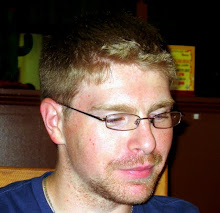Why So Serious, Part One: Child Abuse
As the purple clad and face-painted Joker springs forth from the pool table with knife in hand, he commences somewhat in meekly manner in his own self-indulgent query, “You wanna know how I got these scars?”
The Joker continues detailing a narrative of a father that “was a drinker and a fiend.” Recalling one night when his father goes “off crazier than usual” and how his mother “gets the kitchen knife to defend herself,” he tells that his father does not approve of this and how he “takes the knife to her, laughing while he does it.” As a matter of consequence, the young child witnesses this gruesome scene, yet whence his father realizes his son’s presence, he turns to the child saying jovially, “Why so Serious?”
From there the father inserts the knife blade in his son’s mouth and blares, “Let’s put a smile on that face.” Then, The Joker nonchalantly asks his present victim, “Why so Serious?”
Yet, seldom does a father so intentionally, so deliberately, so literarily scar his child. Nonetheless, the actions of our parents and the mentors of our youth bear heavily on our psychological, sociological, and neurological development. We are the products of our up-bringing.
As Jill E. Korbin, a cultural and medical anthropologist, Case Western Reserve University, explains “[t]he intersection of childhood and violence raises several problematic issues that demand a synthesis and reformulation,” she continues “[a]lthough it is perhaps simplistic to say that both childhood and violence are culturally constructed categories, it is nevertheless the case that violence is not a unitary phenomenon nor is childhood experienced similarly everywhere.”
For without these fundamental assumptions being explicitly stated, “it is impossible to understand the variability of experience involving children and violence.”
Martin H. Teicher, a psychiatry professor, Harvard Medical School, notes that “in the early 1990’s mental health professionals believed that emotional and social difficulties occurred mainly through psychological means.”
Interestingly, “[c]hildhood maltreatment was understood either to foster the development of intrapsychic defense mechanisms that proved to be self-defeating in adulthood or to arrest psychosocial development…”
Basically, the mind was viewed by researchers as essentially software in which any problem could be amended, reprogrammed, or just altogether erased.
The research of Teicher and his colleagues seems to lead to a failure in the hardware of the mind, due to biological and chemical alterations. Teicher explains that significant brain-wave abnormalities were clinically found “in 54 percent of patients with a history of early trauma but in only 27 percent of non-abused patients.” These electroencephalogram (EEG) anomalies reached 72 percent in those with “documented histories of serious physical and sexual abuse.”
When abuse of children occurs, it happens during the critically formative time of experience, as the brain is physically sculpting its structural self, as an artist with a chisel. The severe stress of these experiences “can leave an indelible imprint on its structure and function. Such abuse, it seems, induces a cascade of molecular and neurobiological effects,” as Teicher states, that are irreversible.
Ross Macmillan, a sociology professor, University of Minnesota, records that while “[c]ontrolling for earlier involvement and a host of sociodemographic characteristics, adolescent victimization almost tripled the odds of both violent and property offending in adulthood, doubled the odds of domestic violence, and increased the odds of problem drug use by almost 90%.”
So, basically, each generation lives out the habits, violence, and scars of the preceding generation. It can be said, that the “life trajectory,” which Macmillan discusses more in his research, would be to describe The Joker, as a stray bullet, without any form of agency.
The Joker embodies the now embrowned sins of his father, as we embody those of our parents, and as our children will embody from us. If only each lived in a vacuum, one would not be burdened by the scars of his elders, yet we live not as such, but as institutions produced by many.
This is my second column for the term, and it commences a three part series drawing on The Dark Knight;--mainly, outlining the different stories given by the Joker about the origins of his scars. I use actual scientific research to explore the macro-picture of this subtle and differing stories.


No comments:
Post a Comment